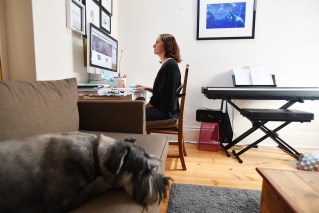Government agency bemoans glacial progress on gender pay equity


The Workplace Gender Equality Agency says employers have dropped the ball on closing the gender pay gap. Photo: TND
Men out-earn women by more than $25,000 a year and the government agency tasked with closing the gap has warned the issue is receiving insufficient attention to drive further change.
More than a month after the Coalition was criticised for handing down a blue budget for a pink recession, the Workplace Gender Equality Agency (WGEA) on Thursday released its latest economic gender equality data.
It found the gender pay gap – defined as the difference between average male full-time earnings and average female full-time earnings expressed as a percentage of male earnings – had fallen by 0.7 percentage points to 20.1 per cent, which equates to $25,534.
The data, which covers the period April 1, 2019 to March 31, 2020, also revealed an expansion in flexible work and paid primary carer’s leave, alongside an increase in the number of female CEOs and board directors.
The proportion of female CEOs jumped 1.2 percentage points to 18.3 per cent, while board directors jumped 1.3 points to 28.1 per cent.
But WGEA director Libby Lyons said the research also uncovered a worrying sense of complacency among employers.
Although the proportion of employers conducting pay gap analyses rose to 46.4 per cent, of these firms the percentage that took action to close their respective gender pay gaps fell 6.1 points to 54.4 per cent.
“Even before the COVID-19 pandemic hit, I was concerned that Australian employers had become complacent,” Ms Lyons said.
“The modest rate of change in last year’s results suggested they were in the grip of ‘gender equality fatigue’.
“I’m now very disappointed that almost nothing has changed this year. It appears to me that Australian employers are on autopilot when it comes to improving gender equality.
The issue is clearly not receiving the necessary attention to drive further change.”
As highlighted by numerous academics and economists throughout the pandemic, the research also found that women “have more precarious employment circumstances, dominating part-time (75.1 per cent) and casual (56.3 per cent) roles”.
This is why partly women suffered more job losses than men during the early stages of the pandemic, though more recent data suggests that trend may have reversed.
Overall, Ms Lyons said the results were disappointing. But buried in the detail were “some positive developments”.
“For the first time since we started collecting data, over 50 per cent of employers now offer paid primary carer’s leave to their employees,” she said. (The exact figure is 52.4 per cent, while 46.4 per cent offer paid secondary carer’s leave.)
“Women’s promotions and appointments to managerial roles continues to rise, with women now comprising almost four in 10 managers in our dataset.
“I was also pleased to see another strong increase in employer action on family and domestic violence (up 6.2 points to 66.4 per cent).”
The number of employers promoting flexible work also increased (up 3.2 points to 75.9 per cent), which is a trend that’s likely to accelerate after millions of Australians were forced to work from home for the first time during the pandemic.
But Ms Lyons is concerned about the slowing pace of progress, and she is far from alone.
The latest Financy Women’s Index shows that in just four months the pandemic added four years to the estimated time it will take to achieve economic gender equality in Australia.
According to the research, a level playing field between men and women is now 36 years away.
“Even if we return to the path of improvement seen before the pandemic, we remain a full generation away from achieving equality,” Deloitte Access Economics partner Nicki Hutley said at the time.
The index came just weeks after the Grattan Institute published research showing investing $5 billion in child care – to raise the Child Care Subsidy from 85 per cent to 95 per cent of costs – would deliver a $11 billion boost to the economy.











